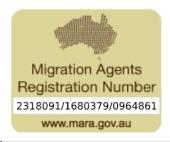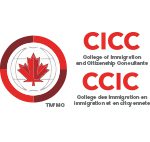The Italy Work Visa (D-Visa) is the primary route for non-EU nationals seeking employment in Italy, followed by a residence permit to stay long term. This guide explains the eligibility, application process, and key requirements to help you understand how to work and settle legally in Italy.
For non-EU nationals who plan to live and work in Italy, you must first obtain a national work visa (known as a D-Visa) to enter the country. Once in Italy, you are required to apply for a residence permit (Permesso di Soggiorno) within eight days of arrival to legally live and work.
This dual requirement ensures that non-EU citizens comply with both immigration entry rules and in-country authorization procedures.
Step 1: Employer secures work authorisation (Nulla Osta / work permit)
The Italian employer must request a work authorisation (Nulla Osta) through the One-Stop Shop for Immigration (Sportello Unico Immigrazione) in the province where the job is located. This step is subject to the annual quotas under the Decreto Flussi, unless the role is exempt.
Step 2: Apply for the D-Visa at the Italian consulate or embassy
Once the work authorisation is approved, the worker applies for a national long-stay work visa (Type D) at the Italian consulate or embassy in their country of residence, submitting the visa application along with the Nulla Osta.
Step 3: Enter Italy and sign the Contratto di Soggiorno
After entering Italy with the D-Visa, the worker must sign the Contratto di Soggiorno (residence contract) within 8 days of arrival.
Step 4: Apply for the Permesso di Soggiorno (residence permit)
The residence permit application must be filed either at the post office (using the immigration “kit”) or at the local immigration office (Questura), together with the necessary documents such as the signed contract, visa, and proof of accommodation.
Step 5: Biometrics and collection of the permit
The applicant attends an appointment to provide fingerprints, photographs, and other biometrics. After processing, the residence permit (Permesso di Soggiorno) is issued, granting the legal right to live and work in Italy.
Below are the main visa types and work routes for non-EU nationals wanting to work in Italy, along with who typically qualifies:
Italy regulates the entry of non-EU workers through an annual quota system known as Decreto Flussi. For 2025, the government has set a total quota of 181,450 places across non-seasonal, seasonal, and self-employment categories. In mid-2025, the government also approved a draft three-year plan (2026–2028) that would allow up to 497,550 new work visas over the period, including 164,850 in 2026.
| Year / Period | Total Quota / Planned Entries | Breakdown / Notes |
| 2025 | 181,450 total | 70,720 non-seasonal work; 110,000 seasonal; 730 self-employment |
| 2026 (first year of 3-yr plan) | 164,850 planned entries | Initial allocation under the multi-year scheme |
| 2026–2028 (cumulative) | 497,550 planned entries | Spread across all three years (2026, 2027, 2028) |
| 2027 / 2028 (projected) | ~165,850 / ~166,850 | Incremental increases each year under the draft scheme |
Notes:
The following table shows the standard fees for national visas (long stay) and residence permit cards in Italy, along with related administrative costs:
| Fee Type | Fees |
| Visa Fee (national D-visa, non-USV) | € 116 |
| Residence Permit (3 to 12 months) | € 40 |
| Residence Permit (12 to 24 months) | € 50 |
| Long-term / EC / Intra-company / Highly Qualified | € 100 |
| Administrative / Postal Kit | ~ €30 |
| Electronic card issuance / fee | ~ €30.46 |
| Tax stamp (marca da bollo) | € 16 |
The processing time for an Italy Work Visa and residence permit can vary depending on several factors, including annual quota availability, the speed of nulla osta (work authorisation) approval, the workload of the Italian consulate handling your application, and local police (Questura) scheduling once in Italy. While Italian law requires residence permits to be issued within 60 days of application, the overall process typically takes 2 to 6 months end-to-end.
| Stage | Typical Timeline |
| Employer obtains work authorisation (Nulla Osta) | A few weeks to several months, depending on quotas |
| Visa application at Italian consulate | 2–8 weeks, depending on consulate workload |
| Entry into Italy & residence contract (Contratto di Soggiorno) | Within 8 days of arrival |
| Residence permit (Permesso di Soggiorno) issuance | Legally within 60 days, but often 2–4 months in practice |
Employer’s Role
Documents the Employer Must Provide
Upon arriving in Italy on a long-stay (work) visa, non-EU nationals should complete the following within eight days to regularize their stay:
Our Accreditations | |||
 |  |  |  |
Explore what Global Citizens have to say about Y-Axis in shaping their future
Australia Skilled Migration Visa
One of our client Kavitha applied for Au
Read More...
Australia PR Visa
Ms. Subhashini got Australia Permanent R
Read More...
Australia PR Visa
Our client Varun Mathur gave a good feed
Read More...
To obtain an Italy work visa, you need a signed employment contract, the original Nulla Osta (work permit) and a copy, a valid passport with at least two blank pages, passport-sized photos, and a completed long-stay visa application form. Additionally, you must provide proof of accommodation and health insurance coverage.
Italy plans to issue approximately 500,000 work visas for non-EU nationals from 2026 to 2028. This represents a slight increase from the previous three-year period (2023-2025), which authorized 452,000 entries.
The processing time for the Nulla Osta typically takes up to 90 days. Once issued, the Nulla Osta remains valid for six months, during which time you must apply for your work visa.
The initial work visa validity corresponds to your employment contract duration, but it doesn't exceed two years. For time-limited contracts, permits typically last one year, while unlimited contracts receive two-year authorizations.
You must apply for your residence permit (Permesso di Soggiorno) within 8 working days of arriving in Italy. This is a strict deadline that cannot be extended, so it's crucial to start the application process immediately upon arrival.
If you plan to work and stay in Italy for more than 90 days, you must apply for a National Work Visa (Type D). The main requirements include having a valid job offer from an Italian employer, securing a Nulla Osta (work authorization) issued by the immigration office in Italy, and presenting proof of qualifications and work experience relevant to the job. You must also show a valid passport, proof of financial means, and health insurance. Italy issues work visas under quotas, so applications must fit within the categories permitted by the government. After arrival, you must apply for a residence permit within eight days.
To apply for a work visa for Italy, applicants are generally required to provide:
Note: These documents will also be used when applying for a residence permit after you arrive.
Step 1: Within eight days of arriving in Italy, collect and complete the residence permit application kit at the local post office.
Step 2: Submit the completed kit along with your passport, visa, work contract, proof of housing, and supporting documents at the post office.
Step 3: The post office will forward your application to the Questura (police headquarters) for processing.
Step 4: Attend your scheduled appointment at the Questura to provide fingerprints and photographs (biometrics).
Step 5: Wait for the processing of your application, which usually takes around 60 days, though sometimes longer.
Step 6: Once approved, collect your Permesso di Soggiorno from the Questura. During the wait, your receipt acts as proof of your legal stay.